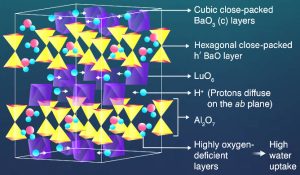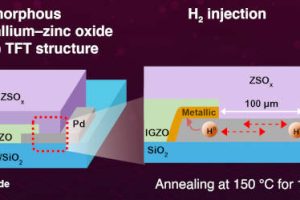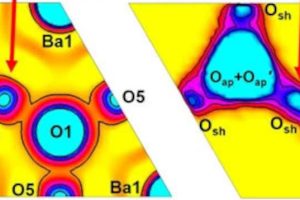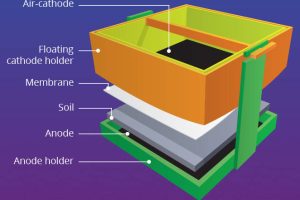
Ba2LuAlO5 “has a remarkably high proton conductivity, even without any additional chemical modifications”, according to the university.
Protonic ceramic fuel cells use solid proton-conducting ceramic electrolytes and operate between 300 and 600°C. This compares to over 700°C for better-established solid-oxide fuel cells – where the solid oxide electrolyte conducts oxide anions.
Cooler running gives protonic cells an advantage, “unfortunately, only a few proton-conducting materials with reasonable performance are currently known”, said Tokyo Tech, which has been searching for more, and discovered Ba2LuAlO5 – described as a ‘hexagonal perovskite-related oxide’.
Previous studies highlighted the importance of oxygen vacancies, prompting its team of chemists to hunt for compounds with a lot of intrinsic oxygen vacancies, leading it to Ba2LuAlO5.
Experiments on the material revealed high proton conductivity in its bulk at reasonable temperatures: 10-2S/cm at 487°C and 1.5×10-3S/cm at 232°C, without doping or other chemical refinements.
Delving into it using molecular dynamics simulation and neutron diffraction measurement, two important characteristics were revealed:
The oxide absorbs a lot of water compared to other similar materials, to form Ba2LuAlO50.5H2O. “The oxide’s higher water content increases its proton conductivity through various mechanisms, such as higher proton concentration and enhanced proton hopping,” said the university.
Structurally, water uptake occurs within two opposing layers of AlO4 tetrahedra (see diagram), made possible by the high number of intrinsic oxygen vacancies in the hexagonal close-packed BaO layers.
The second finding was that protons diffuse mainly along the interfaces of LuO6 layers, which form cubic close-packed BaO3 layers, rather than through the AlO4 layers. This information could be critical in the search for other proton conducting materials, said team member Professor Masatomo Yashima, “Our work provides design guidelines that open up the development of higher-performance proton conductors.”
Already other substances are under the microscope. “The perovskite-related oxide Ba2InAlO5 may also exhibit high conductivity since its structure is quite similar to that of Ba2LuAlO5,” said Yashima.
Tokyo Tech worked with the Australian Centre for Neutron Scattering, the University of Sydney, Tohoku University and Japan Science and Technology Agency.
The work is described in ‘High proton conduction in Ba2LuAlO5 with highly oxygen deficient layers’ published in Communications Materials
 Electronics Weekly Electronics Design & Components Tech News
Electronics Weekly Electronics Design & Components Tech News



